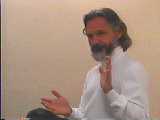 |
|||||||||||
 |
|||||||||||
 |
|||||||||||
 |
|||||||||||
 |
|||||||||||
 |
|||||||||||
 |
|||||||||||
 |
|||||||||||
 |
|||||||||||
 |
|
|
|
|
||||||||||||||||||||||||
|
The distinction between rudimentary and deep understanding parallels the distinction between representational and performance views of understanding. This representational view is summarized nicely by Dewey who distinguished between understanding and rote learning
To grasp the meaning of a thing, an event or situation is to see it in its relations to other things; to note how it operates or functions, what consequences follow from it; what causes it, what uses it can be put to. In contrast, what we call the brute thing, the thing without meaning to us is something whose relations are not grasped. (How We Think)
Understanding consists of the mental representations or mental models individuals construct. In contrast, "thinking with" new knowledge entails deeper understanding—the use of new knowledge to analyze, interpret and evaluate situations and problems. This is a performance view of understanding—the idea that understanding is knowledge in action.
Another way to explain the difference between rudimentary and deep understanding is in terms of the restructuring involved in developing new knowledge. As students encounter new information, they integrate it with their prior knowledge of the subject. The process entails some degree of knowledge structuring and restructuring. For example, a student who already knows a few things about the concept of intelligence reads that children can view it either as a fixed quantity and or as something that can be modified with experience. This new idea is integrated with the student's concept of intelligence without altering it in any significant way. This example illustrates routine knowledge development in which the degree of reorganization is minimal. The student's grasp of intelligence has not changed much but now includes the new idea about children's conceptions of intelligence. Students understand a new idea to the extent that they determine connections and relationships between the new idea and their prior knowledge.
In contrast, some understanding entails radical restructuring that produces a new theory "different in terms of its structure, in the domain of phenomena it explains, and in its individual concepts" (Vosniadou and Brewer, 1987). For example, students enter my class with personal models of learning that resemble a kind of informal behavioral psychology. For instance, they tend to view learning as something that occurs as a result of repetition and reinforcement. In my class they learn about constructivist learning theory which differs sharply with their personal models. They assimilate some constructivist concepts, but do not necessarily make the conceptual shift to a constructivist perspective, a finding consistent with developmental studies of teachers' pedagogical thinking (Levin & Ammon, 1996). |